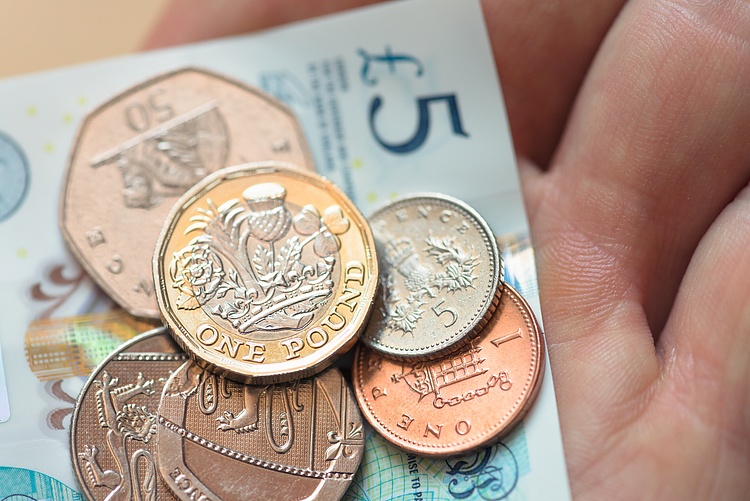- The Pound Sterling declines from 1.2740 against the US Dollar due to weak UK employment data and a firm US Dollar.
- The BoE could struggle to shift toward policy normalization as steady UK wage growth offset the impact of weaker employment levels.
- Investors see the Fed arguing to maintain a restrictive framework for longer.
The Pound Sterling (GBP) falls back after facing selling pressure near 1.2740 in Tuesday’s London session. The GBP/USD pair weakens due to poor United Kingdom (UK) Employment data for three months through April and a firm US Dollar (USD) amid expectations that the Federal Reserve (Fed) will delay interest-rate cuts.
The UK Office for National Statistics (ONS) reported that the labor market recorded a drawdown for the fourth time in a row. Employment fell by 140,000 workers in the three months to April, less than the 177,000 decline in employment seen in the January-March period. The ILO Unemployment Rate rose to 4.4%, higher than the expected 4.3%, which is the highest reading in more than two years. The labor market data indicates that firms struggle to bear the consequences of the Bank of England’s (BoE) higher interest rates.
Meanwhile, wage growth remained steady in the February-April period. Average Earnings Excluding Bonuses, which is a wage inflation measure, grew in line with estimates and the prior release of 6.0%. Also, Average Earnings Including bonuses grew steadily by 5.9%, upwardly revised from 5.7% and higher than the estimates of 5.7%. High wage growth could hamper the BoE’s move towards lowering interest rates.
Daily digest market movers: Pound Sterling remains on backfoot due to weak UK labor market data
- The Pound Sterling faces selling pressure near 1.2740 after a short-lived pullback against the US Dollar. The US Dollar remains firm as investors turn cautious ahead of the United States (US) Consumer Price Index (CPI) data for May and the Federal Reserve’s interest rate decision, which are scheduled for Wednesday. The US Dollar Index (DXY), which tracks the Greenback’s value against six major currencies, consolidates after rising to almost monthly high near 105.40.
- Monthly headline inflation is expected to grow at a slower pace of 0.1% from 0.3% in April, with annual figures growing steadily by 3.4%. In the same period, the annual core CPI, which excludes volatile food and energy prices, is expected to have decelerated to 3.5% from the former release of 3.6%, with monthly figures maintaining the current growth rate of 0.3%.
- Steady or higher-than-expected inflation figures would force Fed policymakers to argue in favor of maintaining the current interest rate framework for a longer period. Soft figures, on the contrary, would reinforce their confidence that the progress in the disinflation process has not stalled.
- The major event for investors will be the Fed’s interest rate decision, in which officials are expected to keep rates on hold for the seventh straight time. Policymakers said they won’t lower rates until they get sufficient evidence that inflation will sustainably return to the desired rate of 2%. Investors will keenly focus on Fed Chair Jerome Powell’s press conference and the dot plot to get significant cues about the interest rate outlook.
- Currently, market speculation for Fed rate cuts for the entire year suggests that there will be only one rate cut this year, either in the November or December meeting. Meanwhile, investors’ expectations for the Fed reducing interest rates in the September meeting have diminished significantly.
Technical Analysis: Pound Sterling holds 20-DEMA
The Pound Sterling finds an interim cushion near the round-level support of 1.2700 against the US Dollar. The GBP/USD pair continues to be well-supported by the 20-day Exponential Moving Average (EMA), which trades around 1.2714. Also, the 50-day EMA is loping higher, suggesting that the near-term trend is still upbeat.
The Cable still holds the 61.8% Fibonacci retracement support (plotted from the March 8 high of 1.2900 to the April 22 low at 1.2300) at 1.2665.
However, the 14-period Relative Strength Index (RSI) has shifted into the lower range of 40.00-60.00, suggesting that the momentum is losing strength.
Economic Indicator
Employment Change (3M)
Employment Change released by the UK Office for National Statistics represents the change in the number of people who were employed in the UK in the three months to the release period. Generally, a healthy and consistent increase of this figure is seen as bullish for the Pound Sterling (GBP), while a decrease is seen as bearish.


